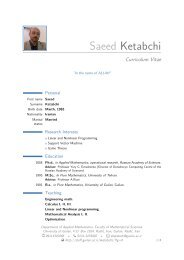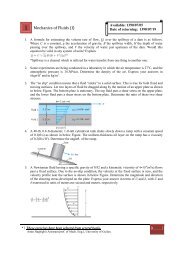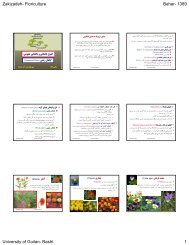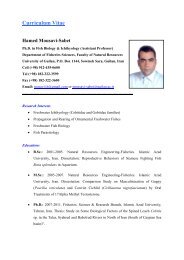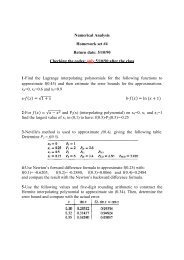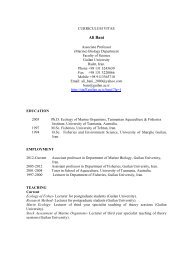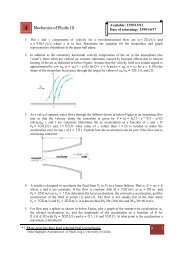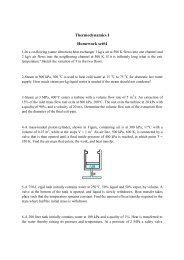Medical Tourism in Developing Countries
Medical Tourism in Developing Countries
Medical Tourism in Developing Countries
- No tags were found...
You also want an ePaper? Increase the reach of your titles
YUMPU automatically turns print PDFs into web optimized ePapers that Google loves.
Promot<strong>in</strong>g <strong>Medical</strong> <strong>Tourism</strong> ● 103Table 5.1 Indicators of human capitalCountryAdultliteracy2003Tertiary students<strong>in</strong> science,mathematics,and eng<strong>in</strong>eer<strong>in</strong>g(% of tertiary)1998–2003Public expenditureon education(% of totalexpenditure)2000–02Publicexpendituretertiary(% all levels)2000–02Argent<strong>in</strong>a 97.2 15 13.8 17.5Chile 95.7 31 18.7 14.0Costa Rica 95.8 26 22.4 18.8Cuba 96.9 n.a. 18.7 17.5India 61.0 20 12.7 20.3Jordan 89.9 30 n.a. n.a.Malaysia 88.7 40 20.3 33.3Philipp<strong>in</strong>es 92.6 25 17.8 14.0South Africa 82.4 17 18.5 14.6Thailand 92.6 n.a. 28.3 21.7Source : United Nations Development Programme, Human Development Report 2005 (New York: UNDP,2005), tables 1, 11, and 12.eng<strong>in</strong>eer<strong>in</strong>g. Tertiary education <strong>in</strong> these technical fields is crucial s<strong>in</strong>ce it isa stepp<strong>in</strong>g-stone to medical education and, s<strong>in</strong>ce technology changes rapidlyand <strong>in</strong>formation becomes obsolete rapidly, it is necessary for keep<strong>in</strong>g upwith globalization and technological change. <strong>Countries</strong> promot<strong>in</strong>g medicaltourism will have to devote time and resources to constantly retra<strong>in</strong><strong>in</strong>g theirworkers so they stay up to date. Thus, the number of students <strong>in</strong> the tertiarylevel of education is an <strong>in</strong>dicator of a country’s ability to compete <strong>in</strong> theglobal economy.As evident from table 5.1, the percent of all students at the tertiary levelenrolled <strong>in</strong> mathematics, sciences, and eng<strong>in</strong>eer<strong>in</strong>g is not the lowest <strong>in</strong> India,but rather <strong>in</strong> Argent<strong>in</strong>a and South Africa (15 and 17 percent respectively).Malaysia leads, with 40 percent, and Chile and Jordan are not far beh<strong>in</strong>d.This seems to <strong>in</strong>dicate that that there is no geographical concentration oftechnically skilled students. However, that is not true s<strong>in</strong>ce Asia has somehighly populous countries so that an observation of absolute numbers ismore reveal<strong>in</strong>g than percentages (<strong>in</strong>deed, Indian universities grant diplomasto more English-speak<strong>in</strong>g scientists, eng<strong>in</strong>eers, and technicians than the restof the world comb<strong>in</strong>ed 21 ). Moreover, tra<strong>in</strong><strong>in</strong>g takes place both <strong>in</strong>side andoutside the country, so for the purpose of build<strong>in</strong>g human capital, it is usefulto also observe the numbers of people tra<strong>in</strong>ed outside the country. There isevidence, for example, that Asians are flood<strong>in</strong>g tra<strong>in</strong><strong>in</strong>g centers <strong>in</strong> mathematicsand the sciences, especially <strong>in</strong> the United States. At Johns Hopk<strong>in</strong>s






